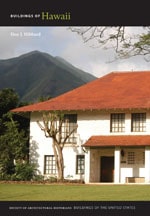This sparkling white, James Gibbs–inspired church stands as a reminder of initial efforts to bring organized religion to Kalawao. Before the end of their first year of exile at Kalawao, thirty-five residents formed a Congregational church. The church's name, Siloama, derived from the story of Jesus's healing a blind man by anointing his eyes with clay and having him wash in the pool of Siloam. It took the congregation five years to raise the funds to erect this building, which was dedicated October 28, 1871. A remodeling in the early 1880s enlarged the building and resulted in the relocation of the entrance and steeple to the west side. When the population shifted from Kalawao to Kalaupapa, use of this building decreased, and between 1927 and 1938, it was virtually abandoned. By 1963, it was deemed unsafe for meetings, and in 1966, the congregation decided to demolish the termite-ridden structure and rebuild it. The reconstruction closely followed the form of the 1880s church, although the new building has a slightly steeper pitched roof and an entrance portico.
You are here
Siloama Church
If SAH Archipedia has been useful to you, please consider supporting it.
SAH Archipedia tells the story of the United States through its buildings, landscapes, and cities. This freely available resource empowers the public with authoritative knowledge that deepens their understanding and appreciation of the built environment. But the Society of Architectural Historians, which created SAH Archipedia with University of Virginia Press, needs your support to maintain the high-caliber research, writing, photography, cartography, editing, design, and programming that make SAH Archipedia a trusted online resource available to all who value the history of place, heritage tourism, and learning.


